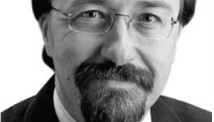LOS ANGELES (TheWrap.com) – After finding the Oscars encroaching on their territory for a number of years, have the Film Independent Spirit Awards finally gotten a little space from their bigger, flashier weekend neighbor?
You’d think so, given that six of the Oscars’ nine Best Picture nominees have grossed more than $ 100 million, and the roster of represented companies includes Warner Bros., Universal, 20th Century Fox, DreamWorks, Disney and Sony.
But one of those $ 100 million films, David O. Russell‘s “Silver Linings Playbook,” will be competing for five Indie Spirit Awards on Saturday, the day before it takes its eight nominations to the Oscars.
Another Oscar Best Picture nominee, Benh Zeitlin’s “Beasts of the Southern Wild,” will also be in the running for the top Spirit Award at the ceremony, which as usual takes place in a tent on Santa Monica beach.
Oscar best-pic nominee “Amour,” meanwhile, is nominated in the foreign-film category at the Spirits, while Wes Anderson‘s best-film Spirit Awards contender “Moonrise Kingdom” is up for an Oscar for its screenplay.
The Oscars are still honoring independent film, even in a year of unexpectedly big box office and surprising participation by the major studios. And the Spirit Awards’ definition of indie is still broad enough to encompass a wide range of movies, from the small-budgeted “Keep the Lights On” to the Weinstein Company release “Silver Linings Playbook,” which skirted the $ 20 million budget limit to qualify for the Spirit Awards but was let in on a judgment call by the jury assembled by Film Independent.
“The Spirit Awards are a celebration of independent film, and one of the things I love is that there’s a lot of diversity in there this year,” said Josh Welsh, co-president of Film Independent with Sean McManus.
“We have first-time directors and new filmmaking talent like Benh Zeitlin, but we also have directors that we go way back with, like Wes Anderson and David O. Russell. This year is a combination of discovery and bringing back people who are a part of what we’ve been doing for years.”
Russell first came to the Spirit Awards in 1995 with “Spanking the Monkey,” for which he won the Best First Feature award; he returned two years later as a Best Director nominee for “Flirting With Disaster.” Anderson won the Spirit Award as Best Director for “Rushmore” in 2000.
Their two films, “Silver Linings Playbook” and “Moonrise Kingdom,” lead the pack with five nominations each. “Beasts of the Southern Wild” has four – and, crucially, the Spirit Awards jury opted to nominate it and its director in the Best Feature and Best Director categories rather than putting them in the Best First Feature category, where they would almost unquestionably have won.
“Keep the Lights On” and “Middle of Nowhere” also received four nominations each, though the latter film did not crack the Best Feature category.
Despite the presence of “Bernie” and “Keep the Lights On” in the top category, this year’s awards do seem to be a shootout between “Silver Linings,” “Beasts” and “Moonrise,” perhaps with a slight edge to the first two – the first a crowd-pleasing film with real awards momentum, the second the clear indie breakout of the year.
Last year’s winner, “The Artist,” was the first film to win both the Spirit Award and the Best Picture Oscar.
Of the 21 Spirit acting nominees, the only ones to also be in the running at the Oscars are Bradley Cooper and Jennifer Lawrence from “Silver Linings,” Quvenzhane Wallis from “Beasts” and Helen Hunt from “The Sessions.” Chances are that Cooper and Lawrence have the edge, with more than 80 percent of Spirit Awards winners since 2000 coming from the ranks of Oscar nominees.
The awards are voted on by the 4,000 members of Film Independent, which is made up of professionals in the indie world but also of film fans who pay the yearly dues. Voting is done online, and Film Independent holds free member screenings in Los Angeles and New York to allow voters to see the films.
MacManus told TheWrap that Film Independent also made a deal with iTunes this year to make some of the nominated films available online, while members also received a 14-film DVD collection containing all the nominees that had chosen to participate. (Members had to sign restrictive use agreements to receive the package, added Welsh.)
This year’s show will be hosted by comic and actor Andy Samberg, whose film “Celeste and Jesse Forever” is in the running in the Best First Screenplay category.
“He brings a very new vibe and personality to the show,” MacManus said. “We wanted to look at this year’s show with fresh eyes. There’s a new look to the room, we’re doing something different with the food – everything is a new take.”
Last year’s host was Seth Rogen, who took the stage and immediately labeled the show “inconsequential.”
“Winning one will get you absolutely nothing,” he said, drawing a big laugh. “It won’t even raise your price, because it proves that you’ll work for nothing.”
If Samberg takes similar shots at the show, both MacManus and Welsh said they won’t mind.
“The awards are incredibly meaningful,” MacManus said. “We believe in independent film and we take it seriously, but we don’t take ourselves seriously. We are okay with poking fun at ourselves.”
Added Welsh, “We’re not all puffed up or self-important. But all joking aside, these awards are significant. It’s a genuine act of honoring the independent film of the last 12 months.”
Movies News Headlines – Yahoo! News
Title Post: It’s Indie Vets Vs. Upstarts at a Varied Independent Spirit Awards
Url Post: http://www.news.fluser.com/its-indie-vets-vs-upstarts-at-a-varied-independent-spirit-awards/
Link To Post : It’s Indie Vets Vs. Upstarts at a Varied Independent Spirit Awards
Rating:
100%
based on 99998 ratings.
5 user reviews.
Author:
Thanks for visiting the blog, If any criticism and suggestions please leave a comment



